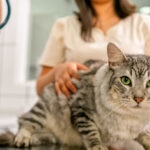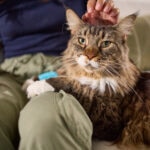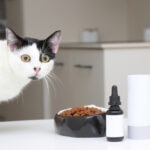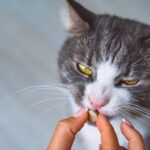How Do You Know If Your Cat Is Happy? 11 Signs You Have a Happy Cat
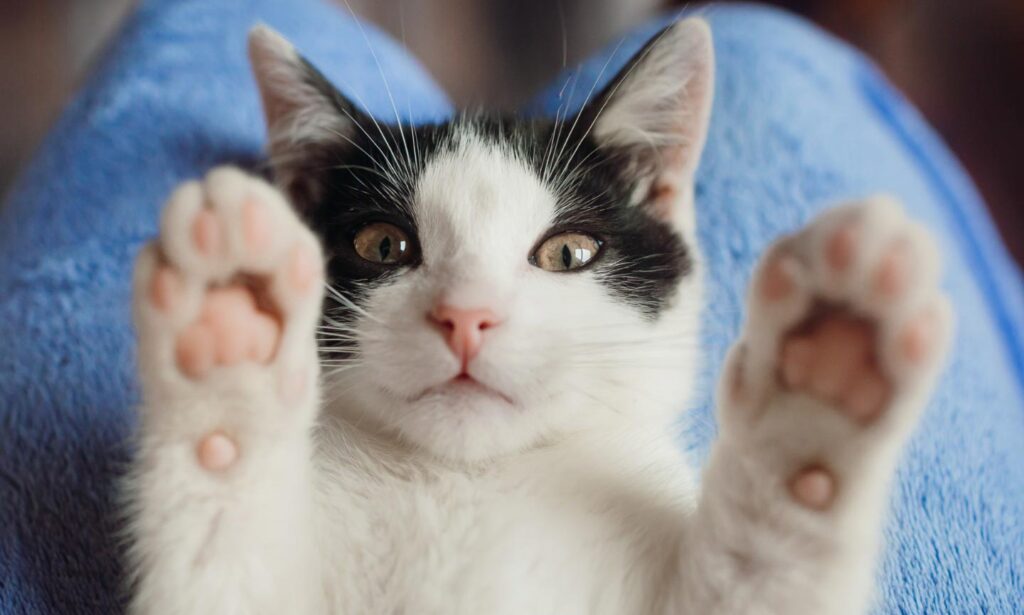
Photo by iStock.com/Barisic Zaklina
As cat parents, we all want our feline friends to be happy, and we go to great lengths to ensure they’re living their best lives. After all, your kitty deserves top-shelf catnip, and you know how they feel about people sitting in “their” chair.
But how do you know your cat is happy? Cats can’t talk or text—or at least, they choose not to—so it’s up to pet parents to understand how cats communicate their feelings and needs.
The more you know about your four-legged friend, the better you can care for them and strengthen your unique bond. Read on for signs that your cat is, indeed, a content kitty.
11 Ways To Tell if Your Cat Is Happy
How can you spot a happy kitty? We asked the experts.
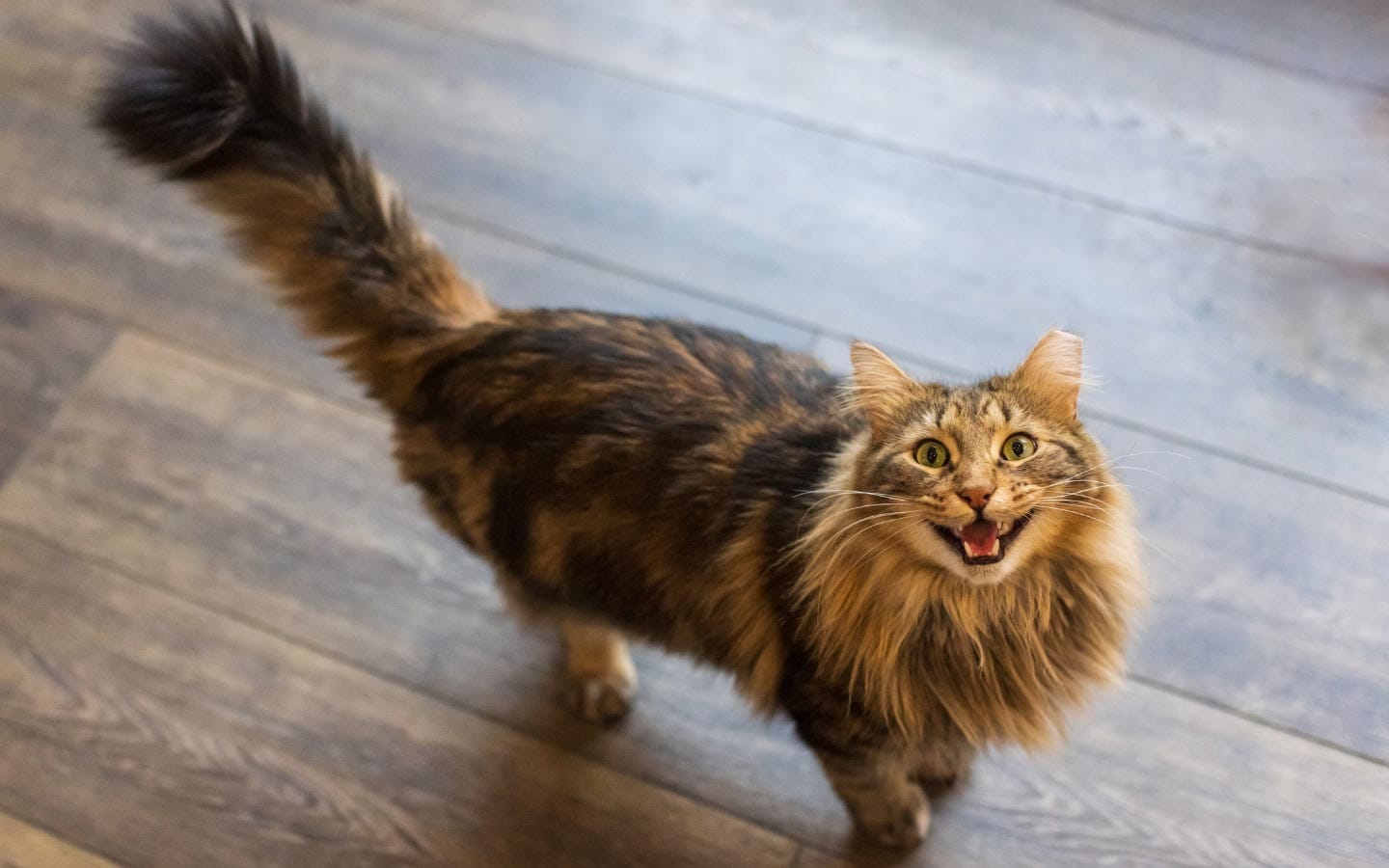
iStock.com/Svetlana Popova
1. Raised Tail
When it comes to cat body language, tails are downright chatty. Tail positioning and movement lend quite a few clues about a cat’s emotional state, says Dr. Cheri Honnas, DVM, a Texas-based veterinarian and veterinary advisor to Bone Voyage Dog Rescue. “A raised yet relaxed tail, swaying gently, often signifies a kitty on cloud nine,” she says. “Plus, there’s that steady strut—the confident walk they showcase when everything feels just right in their world.” Talk about a cat walk!
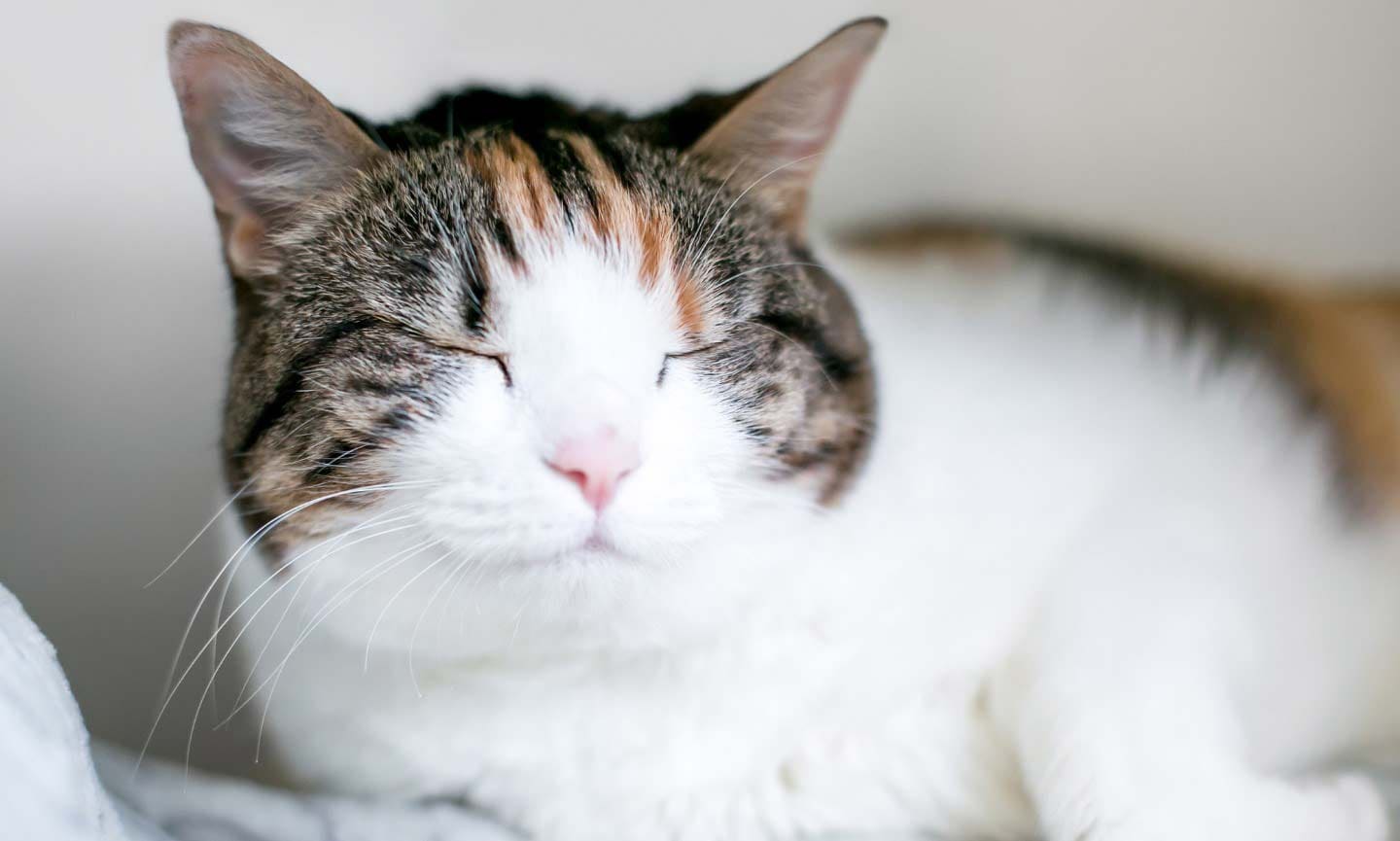
iStock.com/Mary Swift
2. Slow Blinks
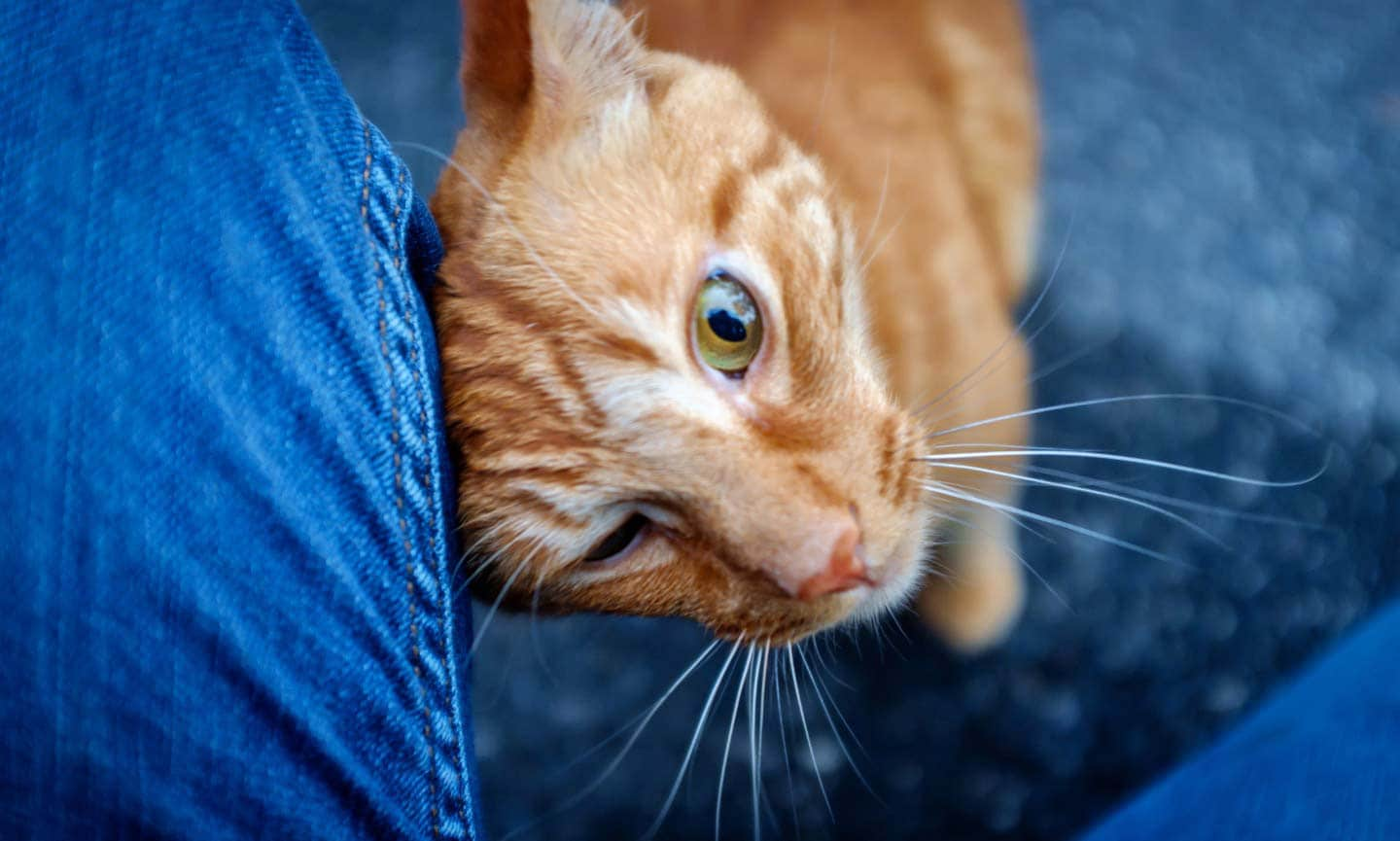
iStock.com/EzumeImages
3. Headbutting
If your cat frequently “headbutts” you or gently rubs their head against you, consider it a sign of affection—and a happy cat! “Cats have this endearing behavior of rubbing against us, which is more than just seeking attention,” says Dr. Honnas. “In doing so, they’re leaving their scent on us, kind of like saying, ‘You’re part of my family.'”
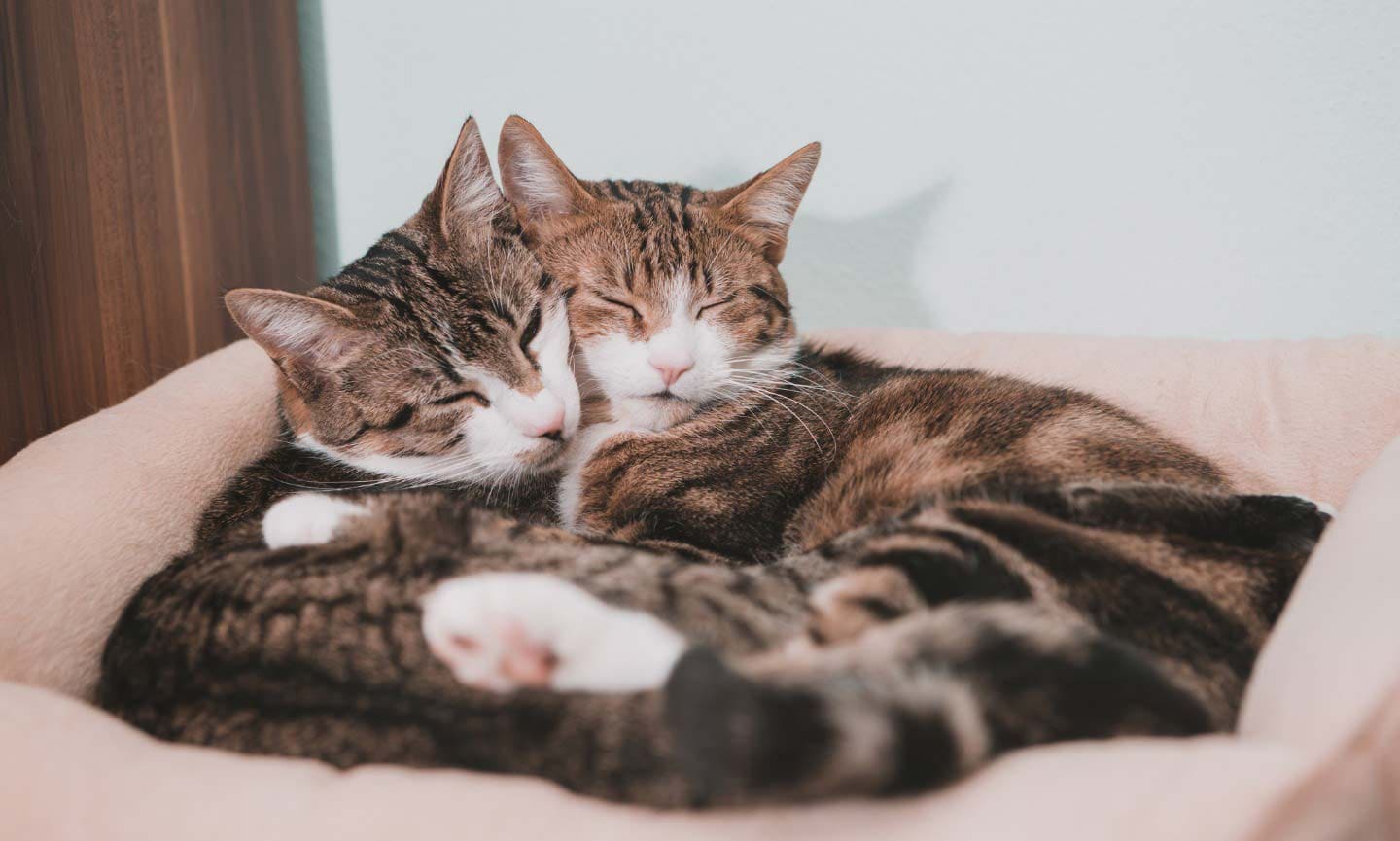
iStock.com/w-ings
4. Relationships With Other Cats

iStock.com/SilviaJansen
5. Making Biscuits
Does your cat ever “knead” you with their paws? The behavior—popularly referred to as “making biscuits”—is a classic (and delightful!) sign of a relaxed, happy cat. “Some cats will actually knead soft surfaces with their paws when they’re happy,” says Dr. Honnas. “It’s an adorable behavior that harkens back to their kitten days.”
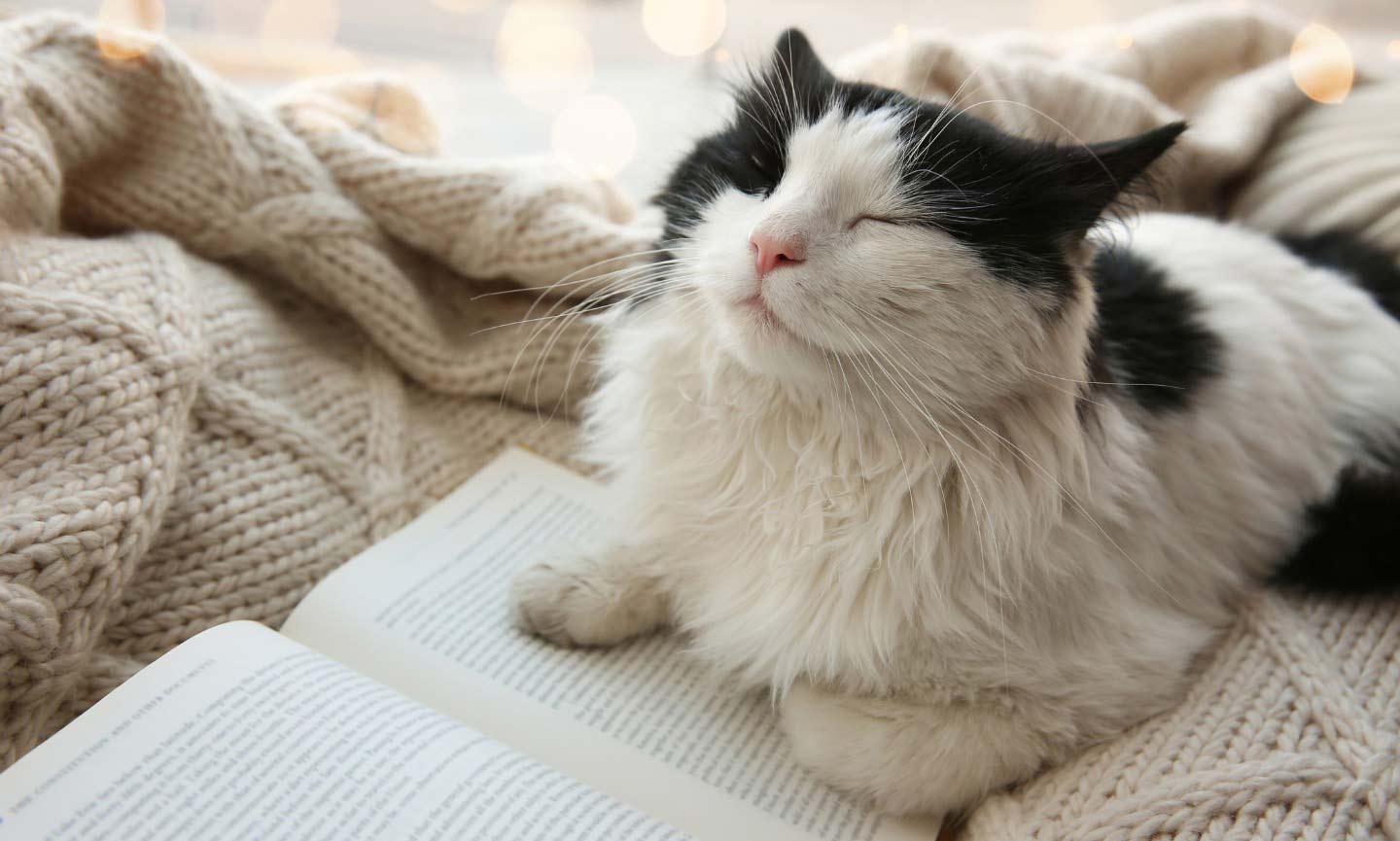
iStock.com/Liudmila Chernetska
6. Purring
Contrary to popular belief, purring isn’t always a good sign. Sometimes, cats in pain or under stress will use purring as a self-soothing mechanism, says Dr. Honnas. However, if your cat seems otherwise content and is letting the purrs roar, you can assume they’re happy. “If your feline friend is lazing in the sun, letting out deep purrs, that’s them sharing their joy,” she says. Soft meows are also a good sign, she adds.
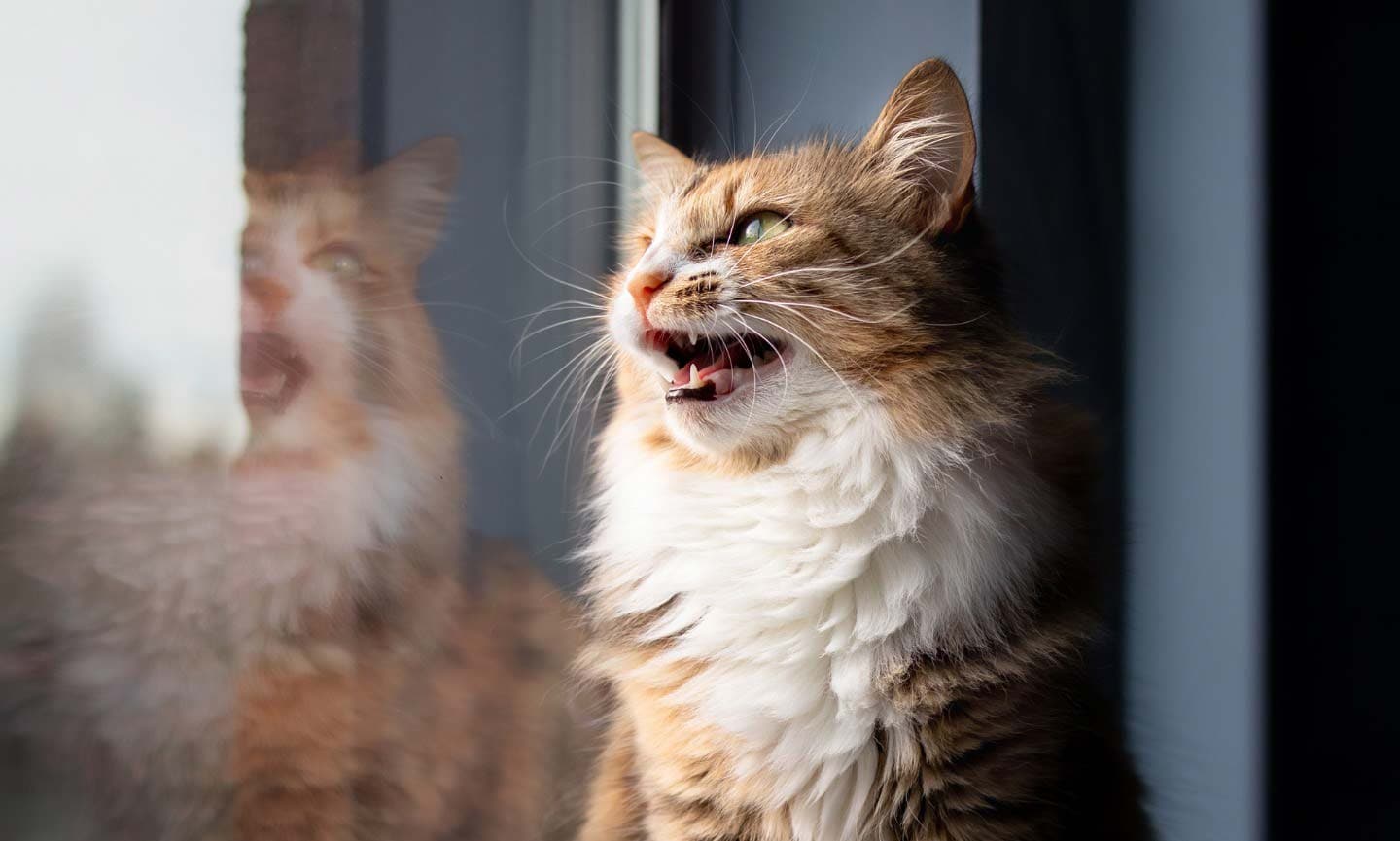
iStock.com/Petra Richli
7. Trilling and Chirping

iStock.com/scaliger
8. Playful Behavior
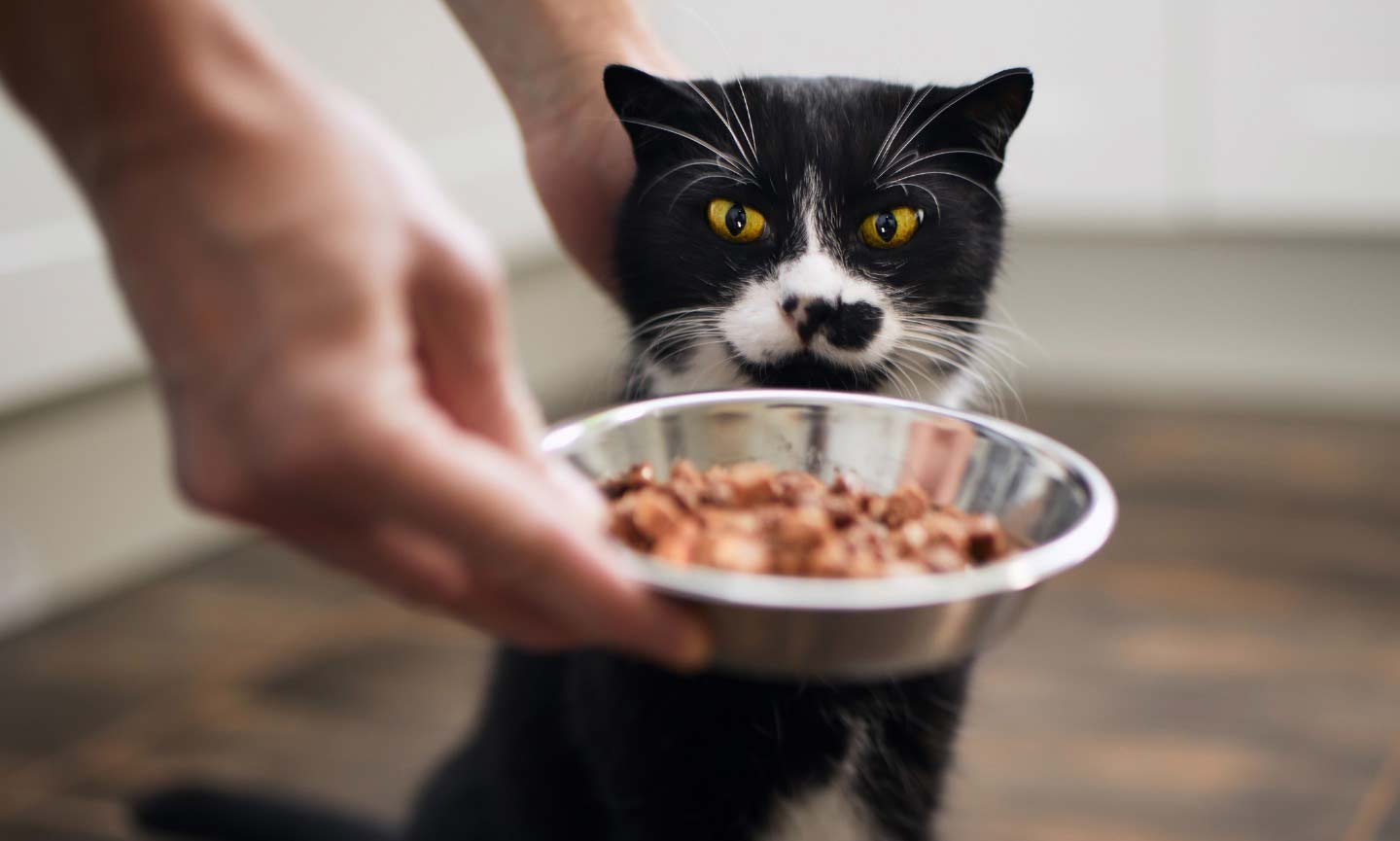
iStock.com/Chalabala
9. Healthy Appetite
Similar to humans, a cat’s emotional state can influence their appetite. In general, a happy cat looks forward to mealtime and treats, says Dr. Bethany Hsia, a California-based veterinarian, cat parent and co-founder of pet end-of-life care business CodaPet. “A happy cat will have a healthy appetite,” she says. Changes to your cat’s appetite can signal an underlying health issue, so check in with your veterinarian if your cat seems unusually hungry or loses interest in food.
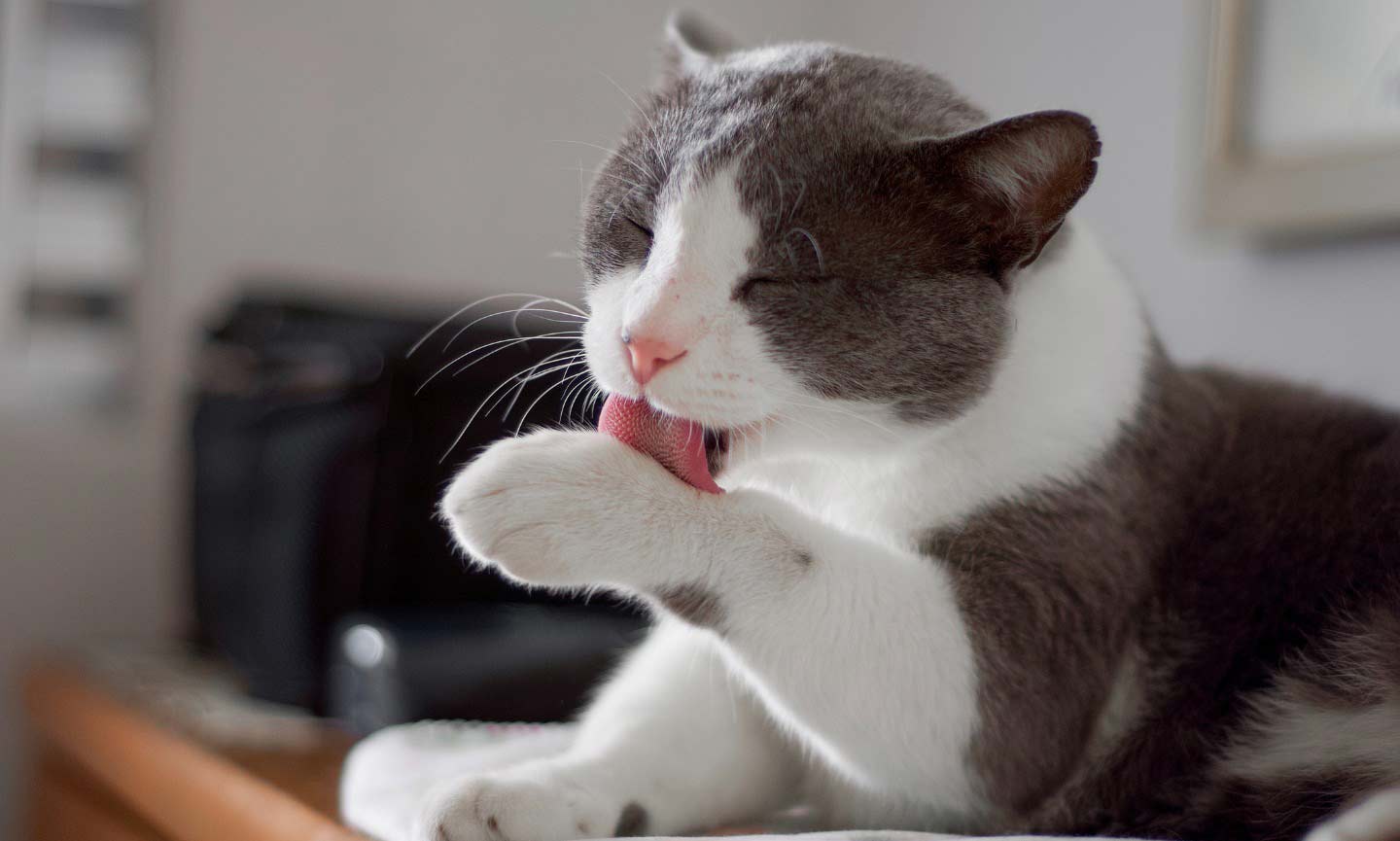
iStock.com/Caíque de Abreu
10. Good Grooming Habits
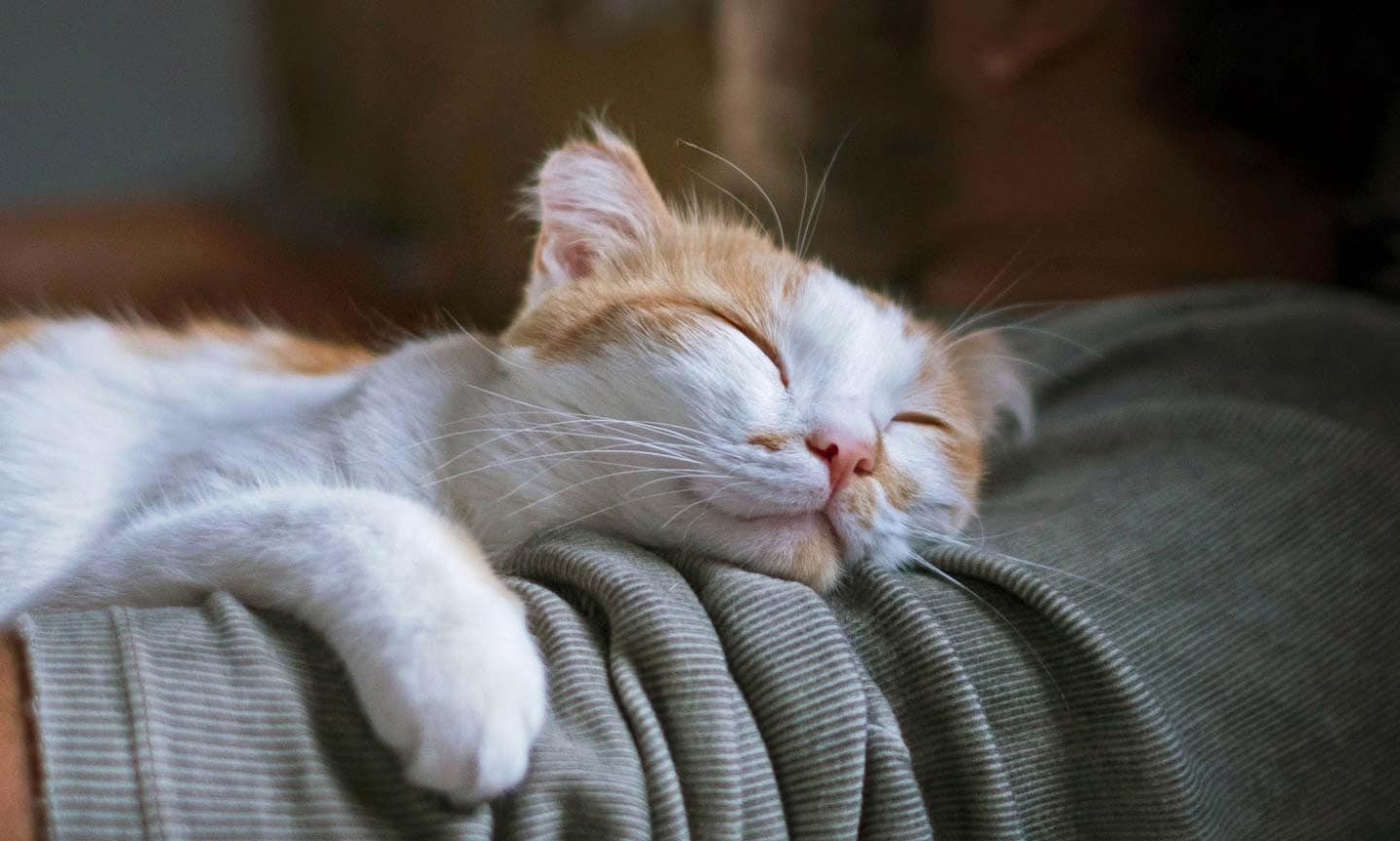
iStock.com/taniche
11. Social Behavior
Is the Internet-Famous “Happy Cat” Actually Happy?
Everyone loves a cute cat who can’t contain their excitement. Case in point? The famous “happy cat meme,” in which an adorable cat jumps for joy when their humans return home.
“When a cat is overwhelmed with happiness, that energy needs an outlet, and playful pouncing is often it,” says Dr. Honnas of the video. “It’s these candid moments that reinforce the deep emotional bond cats share with their humans.”
However, don’t panic if your cat’s greeting is more subtle than a viral TikTok. While the “happy cat” video is certainly cute, less enthusiastic reactions are just as indicative of happiness. “Some cats might jump or dash around when their favorite human comes home, while others might show their happiness in more subdued ways, like a gentle headbutt or curling up on your lap,” says Dr. Kong.
Similar to humans, some cats are naturally “extra,” while others are more low-key with their emotions. “Each cat is an individual, and their expressions of joy are as unique as they are,” adds Kong.
All About Happy Cat Month

iStock.com/Rawpixel
September is Happy Cat Month! An annual observance created by the animal-welfare organization CATalyst Council, the initiative encourages cat parents to learn more about their pets’ unique needs, health and welfare. Here are some ideas for how to celebrate:
- Invest in engaging, interactive toys to stimulate your cat mentally and physically.
- Schedule extra play sessions to strengthen your bond.
- Enrich your cat’s environment with feline-friendly amenities, such as a cat condo, cat tree, a catio, or climbing shelves.
- Work on training! Similar to dogs, training is a great tool to engage your cat’s mind and improve mental health.
- Check in with your veterinarian to ensure your cat is up-to-date with routine healthcare. (A healthy cat is a happy cat!)
- Work with your veterinarian to evaluate your cat’s diet. Are you feeding the appropriate cat food for your cat’s life-stage and health needs?
